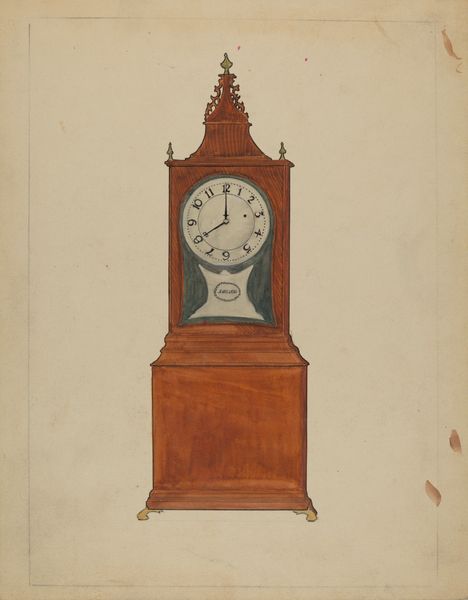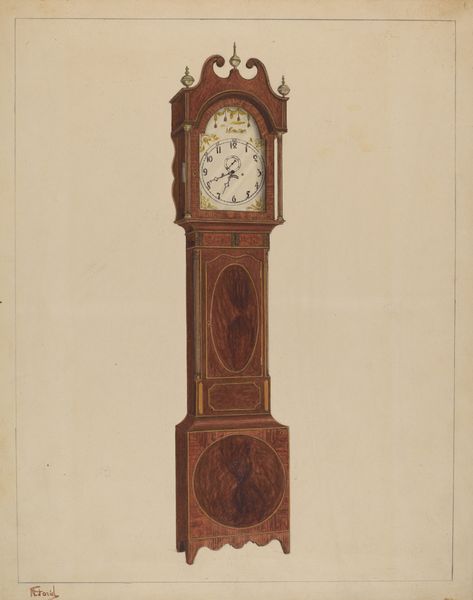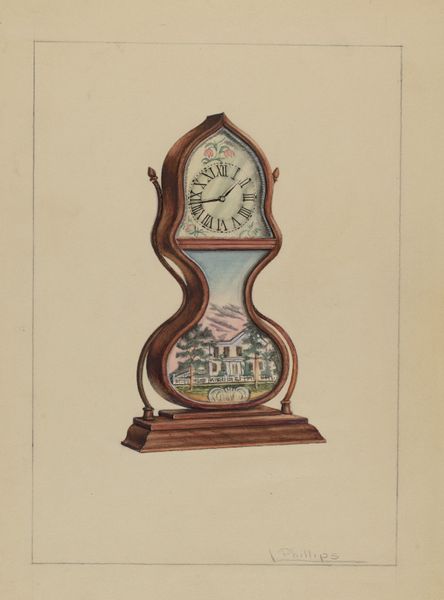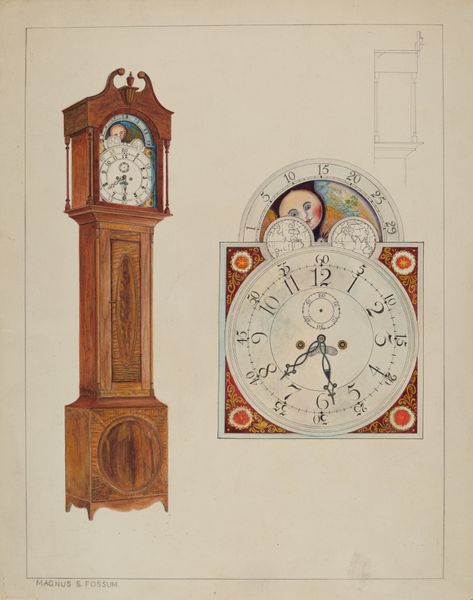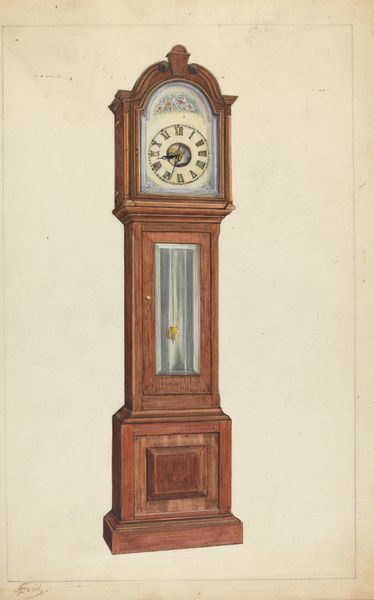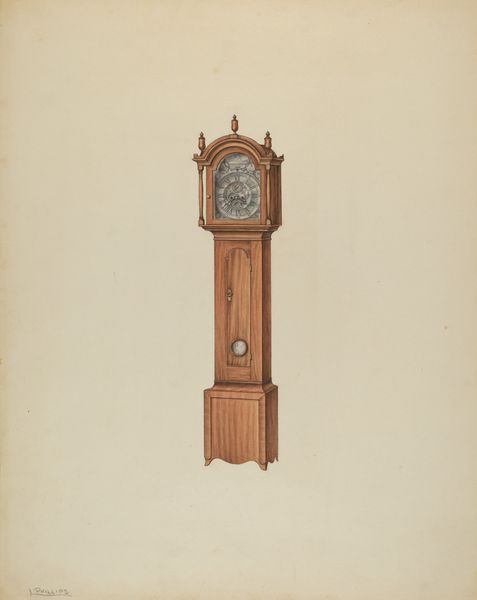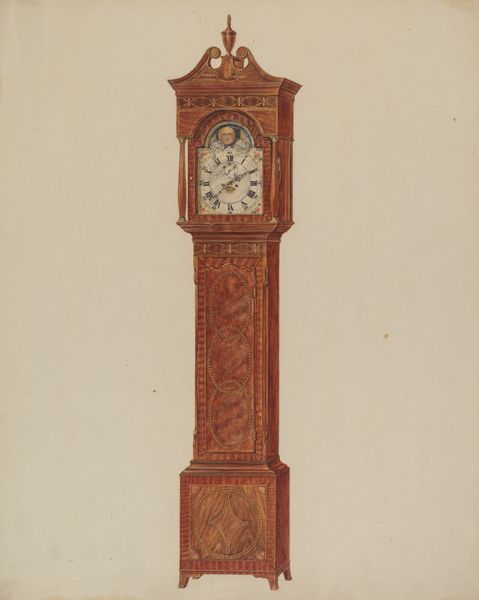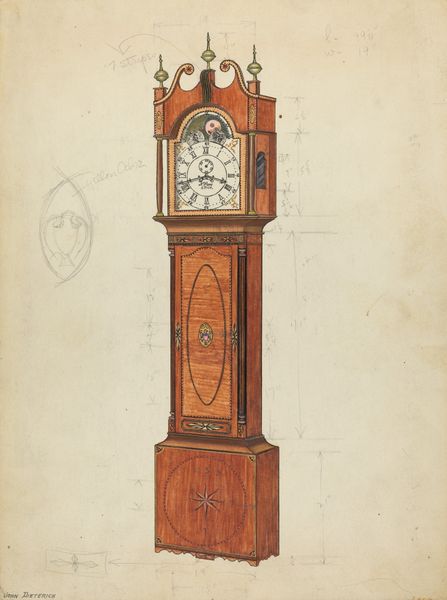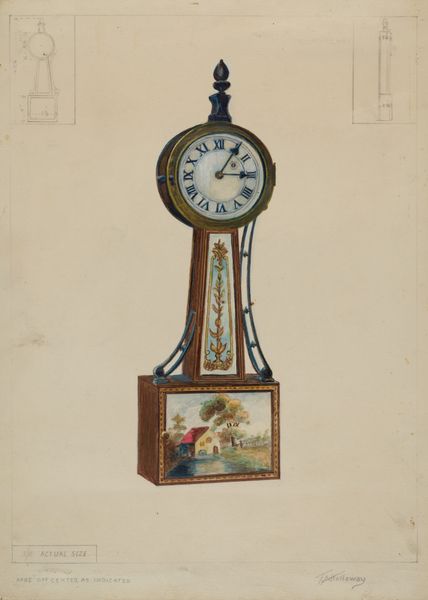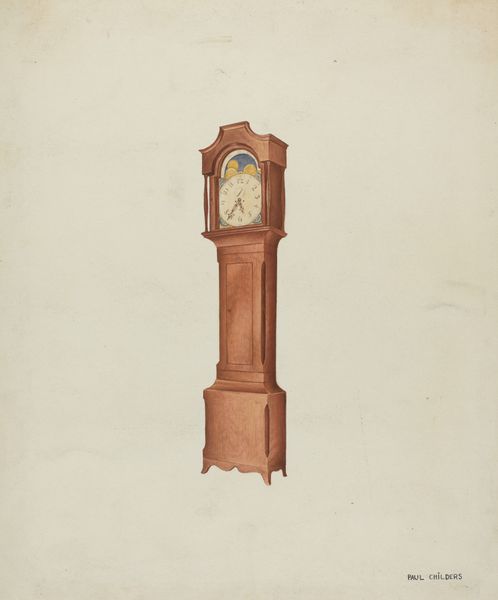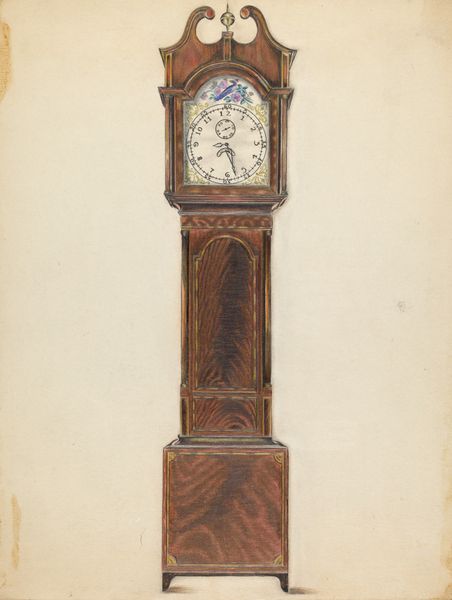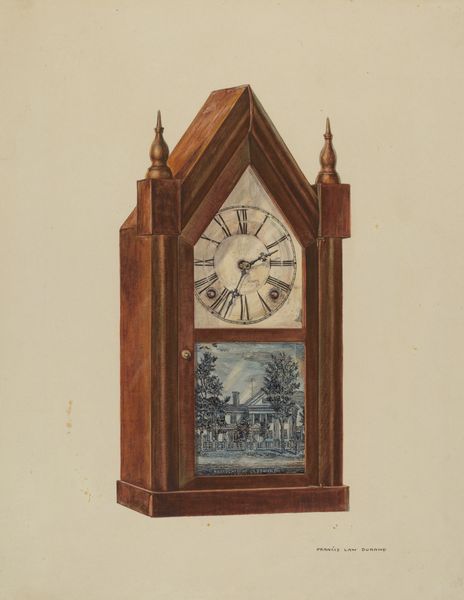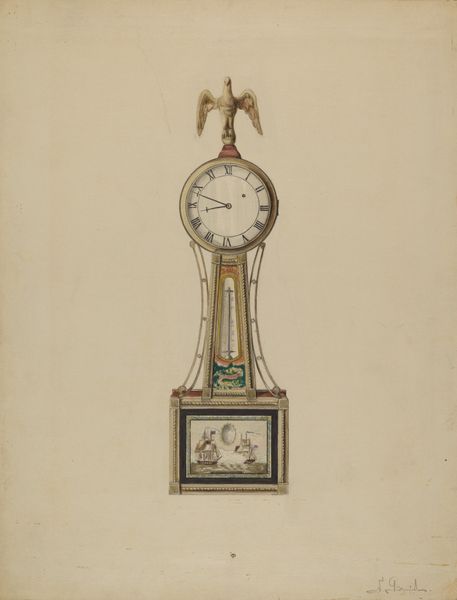
drawing, coloured-pencil, watercolor
#
drawing
#
coloured-pencil
#
water colours
#
pencil sketch
#
landscape
#
watercolor
#
coloured pencil
#
watercolour illustration
#
watercolor
Dimensions: overall: 30 x 23 cm (11 13/16 x 9 1/16 in.)
Copyright: National Gallery of Art: CC0 1.0
Editor: We're looking at "Shelf Clock," a drawing made with coloured pencil and watercolour between 1935 and 1942. It has an enigmatic feel—a clock within a drawing; the image beneath it seems disconnected from time. How do you interpret this work, looking at its formal properties? Curator: Indeed. Initially, observe how the composition is structured. The clock dominates the pictorial space, rendered with precise detail, especially its wooden frame. Note how the artist uses vertical lines to create a sense of height, contrasting with the miniature landscape at the base. The subdued colour palette, mostly browns and greens, contributes to its muted tone. Editor: I see that contrast—the rigid lines of the clock against the softer landscape. But what does that juxtaposition achieve? Curator: Consider the placement of these elements. The clock’s face, almost devoid of explicit markings apart from Roman numerals, exists above the bustling tableau below. This visual hierarchy proposes a divergence, an active tension that arrests attention: what interplay transpires between regulated, measurable time and that of landscape's less predictable experience? Editor: So, you're saying the relationship between the abstract time of the clock and the 'real' time of the landscape is key to understanding it? Curator: Precisely. Observe how the hands of the clock are positioned: approximately five minutes before twelve. Ponder on the temporality suggested: anticipation? Delay? The artist orchestrates a dialectic not only within their depicted image but, more vitally, the subjective, individual apprehension of *that* specific, suggested time, measured intrinsically and with self-reference. Does that provoke additional possibilities for you? Editor: I hadn't noticed the time. It is an anxious position: both pointing up, a sort of moment of potentiality, as if ready to start. Thank you for showing me how the different visual components point to an active relationship and create a broader understanding.
Comments
No comments
Be the first to comment and join the conversation on the ultimate creative platform.
